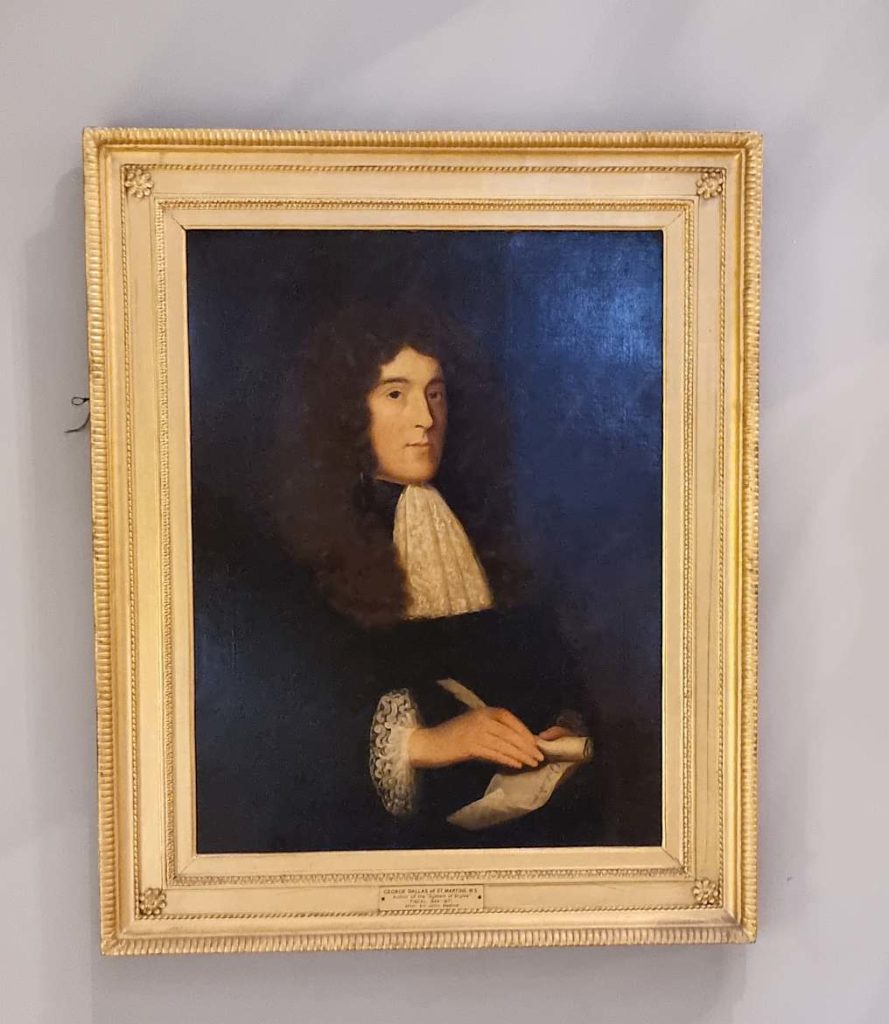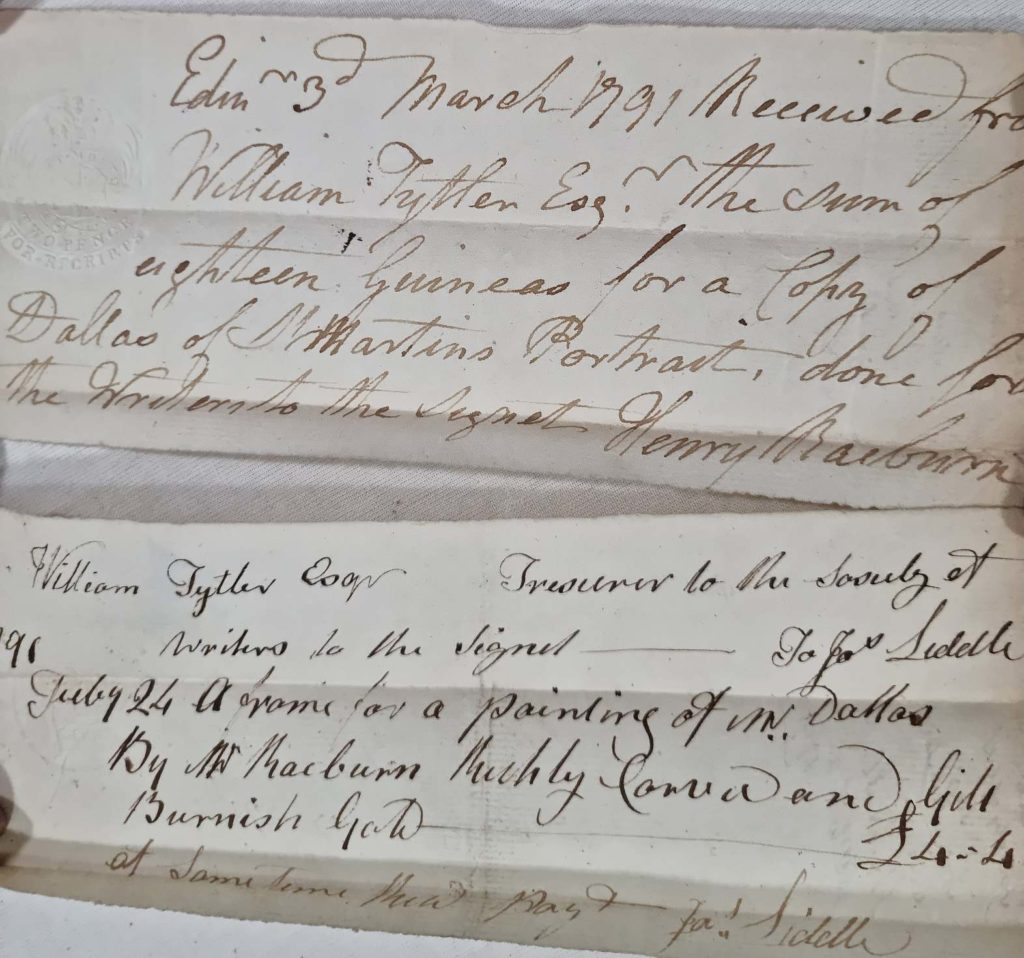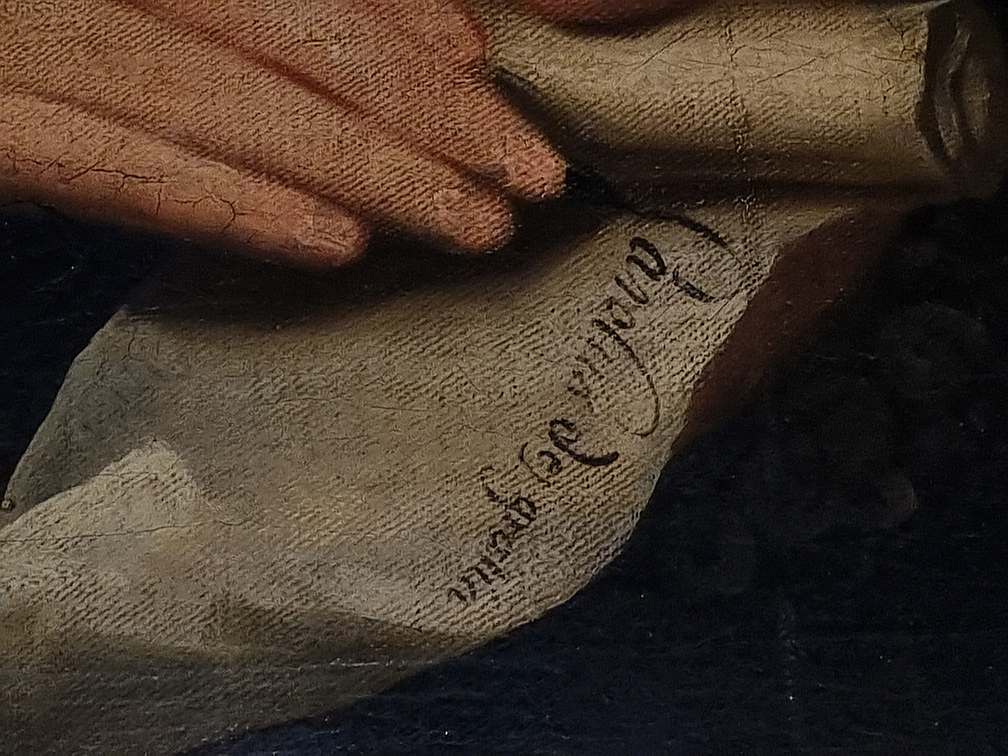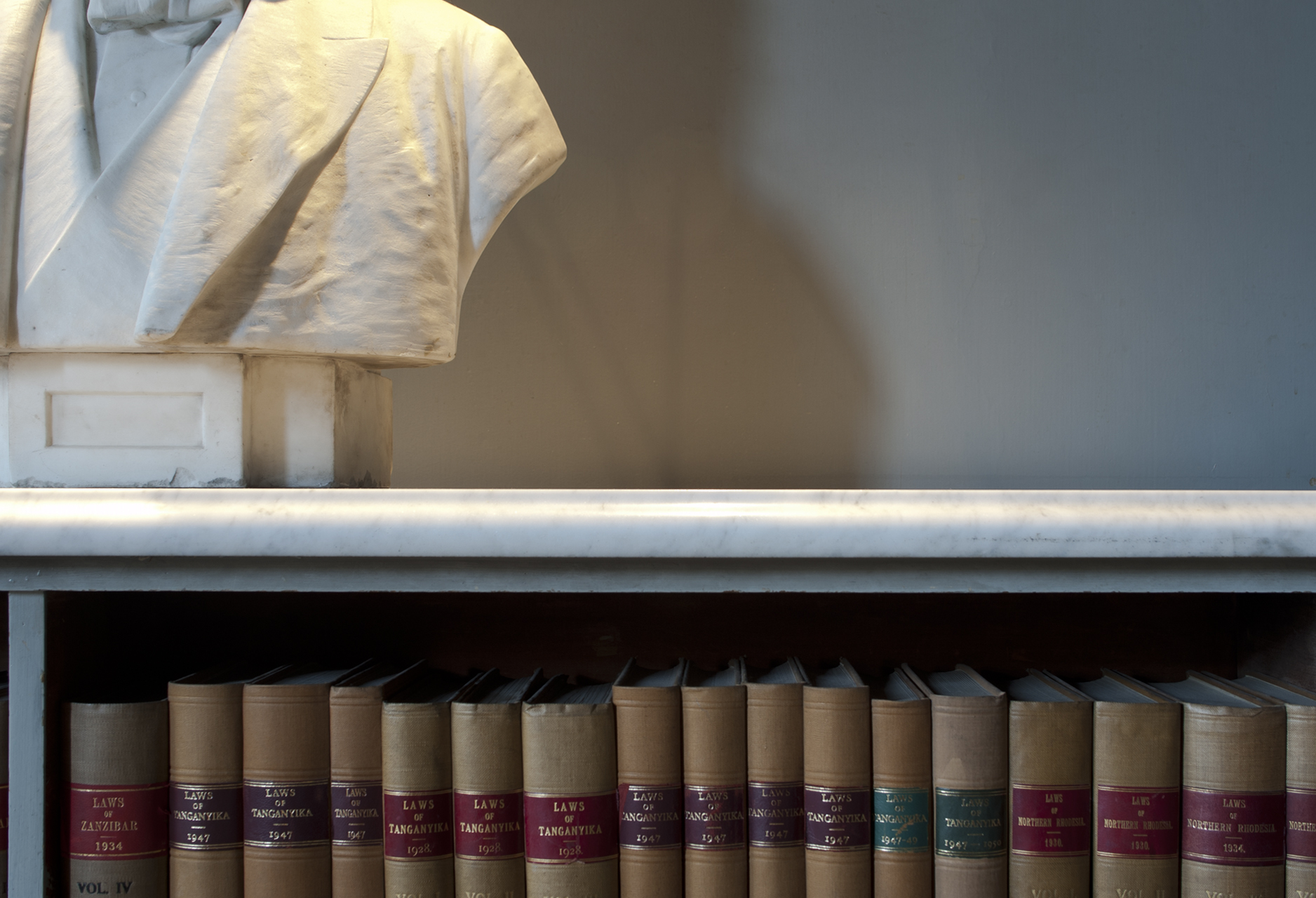Mapping the WS Society’s Early History
This week saw the beginning of a new project to catalogue the seventeenth and eighteenth century unbound paper archive of the WS Society and Signet Library, with this material being added to the existing online catalogue of bound WS Society and Signet Library archive records created during the Covid years.
Interesting things are already emerging: bar bills from early Georgian WS Society events; maintenance records giving light onto the still largely unknown first home of the WS Society in Writers Court; and evidence of early Signet Library donations and acquisitions.
But perhaps the most exciting is a pair of receipts concerned with the acquisition of the WS Society’s portrait of the writer and donor of the Signet Library’s first book, George Dallas WS of St Martins (1636-1701). For centuries it has been believed that the painting is a copy in oils of an original by the Flemish artist Sir John Medina, who settled in Scotland with his family in 1694. The receipts throw up new information about the picture’s provenance – and raise new questions as to the origins of the original painting.

The life of George Dallas
George Dallas was born in or around 1636 (the precise year is contested), and having served an apprenticeship to John Bayne WS took his oath to the Society on 16th July 1661. His legal career developed rapidly, his power base being in the lands to the north of Inverness. In 1662, the Tain magistrates took him on as their man of business, with the Town Council of Cullen following suit in 1664. In 1665 he began the large-scale acquisition of land in Cromarty, and in 1666 he took office within the WS Society as Fiscal, a role he would retain until 1671. His Edinburgh writing chambers were said to have been on the north side of the High Street, just east of the Mercat Cross. In the 1670s he became involved with the business of the Privy Seal, and in 1680 he took office as the Deputy Keeper of the Privy Seal, which he would occupy until his death. He sat in Parliament for Cromarty in 1665, being subsequently returned in 1667, 1669-74, 1678, 1681-2 and 1685-6.
It was between the 1660s and 1680s that he gathered the materials for the work in which his fame now resides: A System of stiles, as now practicable within the kingdom of Scotland: and reduced to a clear method, not heretofore. Published in Edinburgh in 1697, the work is in modern parlance a set of proformas for a wide variety of legal documents that a Writer to the Signet or other law agent of the day might encounter or need to draw up. It was the first text of its kind and although it does not reflect the changes in Church governance that followed on from the Glorious Revolution of 1688, but it was nevertheless hugely successful and influential, running to a reprint in 1774 after almost a century of life.
This success was partly based on Dallas’ policy of deploying as examples real documents with named individuals, some highly significant – Sir Robert Sibbald’s elevation to the position of Royal Geographer, for instance, or Lord Stair’s contract to print the Acts of Sederunt and Decisions of the Lords of Session. Lord “Bluidy” Mackenzie of Rosehaugh and the architect William Bruce also feature. In modern times, this feature has given the book a second life as an important historical source.
Despite its longevity and success, the book’s reception amongst its users was a mixed one, with William Ross WS, one of Dallas’s most distinguished successors, claiming that when young legal clerks were confronted with the “vast opake body” of Dallas’ Stiles, “a frightful volume of arid, naked, unintelligible forms”, their hearts failed within them (which, remarkably, may be the first use of the metaphor in modern literature).

1790-1791: copying the Portrait of George Dallas
The decision to make a copy portrait of Dallas was originally reported by John Davidson of Halltrees, Deputy Keeper of the Signet, at the general meeting of the Society recorded in the Sederunt Book as follows:
8 February 1790 The Keeper informed the meeting that Mr. William Dallas one of their brethren great grandson of Geo. Dallas of St Martins author of the System of Styles was in possession of an Original Portrait of his great grandfather & had been so obliging as lend it to the Signet Office, where it now is. That Mr. Dallas had agreed to allow a Copy of it to be taken and he proposed to the meeting that a copy of said portrait should be taken & hung up in the Hall – The meeting unanimously approved of the Proposall & requested the Keeper to Employ some proper artist to make the copy & to Return the Thanks of the Society to Mr. Dallas for his permission so to do & for the use of the Original.
The receipt recording the payment to the artist for the copy is dated 3rd March 1791. Eighteen guineas were paid on behalf of the Society by the lawyer and historian William Tytler of Woodhouselee, then the Treasurer of the Society. Tytler was one of the Fathers of the Signet Library, and hugely significant in its history, but his august presence is outshone by the signature on the receipt, which is that of (Sir) Henry Raeburn, the greatest portrait painter in Scotland of the late Enlightenment. Although it is likely that the copy was made at Raeburn’s studio by apprentices, there is at least some possibility of the copy involving the hand and brush of Raeburn himself, who was still developing his style and his practice alike at this stage of his life and was not yet the preeminent artist that he would later become.
The second receipt, dated 24th July 1791, relates the provision of the portrait’s “richly carved, gilt burnished gold” frame for £4-4s by James Liddle (who Williamson’s Directory finds in Teviot Row (now part of Lauriston Place).
The receipt is the only record in the Society’s archive to mention Raeburn’s involvement in the painting.
Was the original painting by Sir John Medina?
There is no hint in any of the Society records of the 1790s of any thought that Sir John Medina was the artist behind the portrait copied for the Society by Henry Raeburn. Although the caption on the frame credits Medina with the work, the caption is a later addition and does not represent the thinking of 1791. A printed list of the Society’s art collection which can be dated to about 1850 is the earliest explicit attribution to Medina. This was drawn up with or by the Librarian of the day, David Laing, who was Scotland’s leading collector and connoisseur of portraiture at that time, and Laing may well be responsible for bringing Medina into the equation.
There are in all frankness considerable difficulties with this attribution. The portrait is clearly that of a relatively young man, but George Dallas was fifty years old when Medina first arrived in England in 1686. The portrait is true to a style of Scottish portraiture that originated in the Edinburgh studio of David Scougall and that became dominant between the Restoration and the Glorious Revolution. This style was already drifting out of fashion before Medina settled in Scotland and applied the coup de grace. Finally, the text of the paper that Dallas is depicting writing reads “Carolus dei gratia”, a reference to King Charles II who died in 1685, a year prior to Medina’s arrival in London. The phrase occurs in Dallas’ Stiles as the preface to a Privy Seal precept, which suggests that the portrait may have been occasioned by Dallas’s taking his oath as a Writer to the Signet in 1661 or alternatively his elevation to the Deputy Keeper of the Privy Seal in 1680..

Medina’s style is best represented by his bravura portrait of Lord Grange, now hung in the Signet Library’s Commissioners Room. It’s verve and colours are a stark contrast to the stiff and regimented feel of the Dallas portrait. If the style of the portrait is indeed that of David Scougall and his followers, then there would be a narrative available for the creation of the original portrait, as David Scougall (c. 1610-c. 1680) is known to have painted Scottish Members of Parliament in the immediate post-Restoration period. Dallas was a Parliamentarian during this period. With the original picture from which the copy was taken is lost, “Follower of David Scougall” is perhaps as close to the true attribution as we are likely to come.

